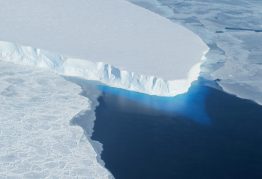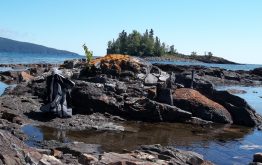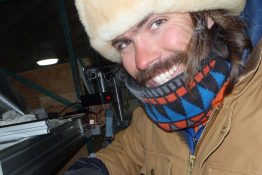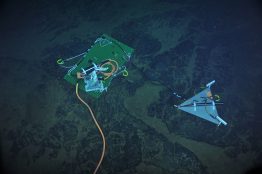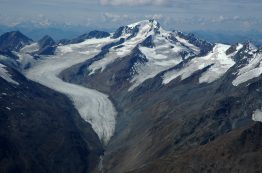Thwaites Glacier on the edge of West Antarctica is one of the planet’s fastest-moving glaciers. Research shows that it is sliding unstoppably into the ocean, mainly due to warmer seawater lapping at its underside. But the details of its collapse remain uncertain. The details are necessary to provide a timeline for when to expect 2 feet of global sea level rise, and when this glacier’s loss will help destabilize the much larger West Antarctic Ice Sheet.
Read more at UW Today »Conditions right for complex life may have come and gone in Earth’s distant past
Conditions suitable to support complex life may have developed in Earth’s oceans — and then faded — more than a billion years before life truly took hold, a new University of Washington-led study has found. The findings, based on using the element selenium as a tool to measure oxygen in the distant past, may also benefit the search for signs of life beyond Earth.
Read more at UW Today »Rapid Arctic warming has in the past shifted Southern Ocean winds
The global climate is a complex machine in which some pieces are separate, yet others are connected. Scientists try to discover the connections to predict what will happen to our climate, especially in a future with more heat-trapping gases. A dramatic pattern in our planet’s climate history involves paroxysms in Arctic temperatures. During the last ice age, tens of thousands of years ago, Greenland repeatedly warmed by about 10 degrees Celsius over just a few decades and then gradually cooled.
Read more at UW Today »Underwater volcano's eruption captured in exquisite detail by seafloor observatory
The cracking, bulging and shaking from the eruption of a mile-high volcano where two tectonic plates separate has been captured in more detail than ever before. A University of Washington study published this week shows how the volcano behaved during its spring 2015 eruption, revealing new clues about the behavior of volcanoes where two ocean plates are moving apart. “The new network allowed us to see in incredible detail where the faults are, and which were active during the eruption,” said lead author William Wilcock, a UW professor of oceanography.
Read more at UW Today »Mountain glaciers are showing some of the strongest responses to climate change
A new study analyzing 37 glaciers around the world shows that because of their decades-long response times, glaciers are among the purest signals of human-driven climate change.
Read more at UW Today »
